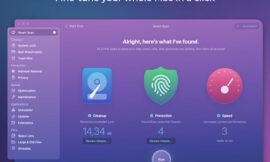When considering a network monitoring tool for your IT infrastructure, Zabbix and Paessler PRTG are two prominent options, and we’ll explore which one is right for your needs.

For organizations in 2022, the majority of their business processes are conducted online. Valuable digital assets are also stored in network systems, making the smooth operation of their internal networks a must to ensure the success of their operations. Fortunately, network monitoring systems work to secure these systems and maintain their proper functionality. If you are looking into purchasing a network monitoring tool for your IT infrastructure, you have likely considered the Zabbix and Paessler PRTG network monitors as viable options. This resource will dive into the difference between these tools so that you can make the best choice.
What are network monitoring tools?
Network monitoring tools assist in the upkeep and proper maintenance of organizational computer networks. This is done by constantly visualizing and monitoring the networks for any troublesome components that could fail or be running slowly before they can compromise the network. The monitoring tools then provide reports detailing the health status of the networks, so users can take action to rid their computers of assets or devices that may cause future issues down the line.
SEE: Hiring Kit: Network Engineer (TechRepublic Premium)
Zabbix vs. Paessler PRTG: Which has better performance monitoring?
In order for network monitoring tools to be effective, they need to scan the networks and report back on any issues so they can be addressed appropriately.
Zabbix is a web-based network monitoring tool that performs real-time monitoring automatically and simultaneously across all computers and devices within an organization’s network. For database monitoring, it supports Oracle, MySQL, SQL and PostgreSQL. A potential drawback of the tool is that it usually requires a client agent program to be installed to monitor remote devices. With the use of agent programs, they support WMI monitoring, SNMP and ICMP, and their agentless protocols include SSH, TCP, Telnet and ICMP.
Paessler PRTG is an on-premises and cloud-based monitoring tool that does not require the installation of client agent programs for its data collection, making it a fine choice for users who have many remote devices within their network. Its monitoring supports cloud monitoring, packet sniffing, SSH, PowerShell and push message receivers. In addition, its database monitoring supports ICMP, SQL, MySQL, SNMP, WMI, PostgreSQL and REST to name just a few.
Zabbix vs. Paessler PRTG: Which has better data visualization and network mapping?
High-quality visualization and network mapping, and topology features are essential for users to gain insights into each device within a network system.
With Zabbix, users can develop custom mapping and diagrams of their organizational networks, allowing for easier visualization. For example, users can view the mapping between numeric values and string representations with their value maps. The Zabbix web front end lets users display their gathered data in map and graph format, and users can filter and organize their dashboard in the way they prefer. Independent visual elements like maps, graphs and data overviews can also be grouped together for visualization in one overview screen.
Paessler PRTG also supports custom diagrams and mapping to view data and historical trends. Their drag-and-drop map editor makes it easy for users to design and navigate their data maps. Additionally, the product comes with geo maps that can provide information live from anywhere across the globe. For reporting, their report-building tool can help users compile the correct data and organize it in a way that is ideal for their visualization needs.
SEE: 5 programming languages network architects should learn (free PDF) (TechRepublic)
Zabbix vs. Paessler PRTG: Which offers better data analysis?
Network monitoring tools can collect and analyze data to provide insights and ensure the proper functionality of the network devices.
Zabbix has predictive functions for analyzing and forecasting data trends, so users can make proactive decisions. Users can set trigger severity levels that determine the importance of their data events. Users can also define smart problem thresholds, allowing the system to automatically detect anomalies within their incoming metric flow based on their selected options. Through machine learning, the tool can also use the Zabbix Baseline Monitoring to detect anomalies by referencing baseline values detected through real-time history data analysis.
PRTG has a built-in protocol analyzer and several additional analysis features. The tool can utilize data for analyzing bandwidth, developing performance statistics, identifying bottlenecks and more. Users can set custom parameters for their analysis, and the system can categorize network traffic by their custom settings, IP address or protocol settings. The analysis results are then represented as tables or graphs that are quickly created with their real-time automatic reporting.
Final thoughts about Zabbix and Paessler PRTG network monitoring solutions
The Zabbix and Paessler PRTG data monitoring tools provide helpful features for ensuring the proper functionality of network assets. However, to determine the best option for you, you should consider a variety of factors. For one, the performance monitoring of remote devices involves using agents for Zabbix, whereas Paessler PRTG can perform this without agents needed. Therefore, the necessities involved with Zabbix remote device monitoring could sway your decision on which tool is best for you.
Customization is also a notable aspect of these products. While Zabbix and Paessler PRTG both have customizable data analysis, visualization and mapping features, some customization capabilities may be better for your organization’s monitoring requirements than others. Therefore, when deciding on a network monitoring system, you should identify the features best suited to your organization’s network and determine which option would satisfy more of these needs.
Source of Article



